Today was going to be chock full of adventure. I was going to do some exploring on my own in the morning. Then we were would have a coach tour of Belfast with a step on guide. But first, a full Irish breakfast.
Right across from our hotel was this beautiful Gothic structure. Of course it caught my eye the day before. With an early start I went over to take a closer look
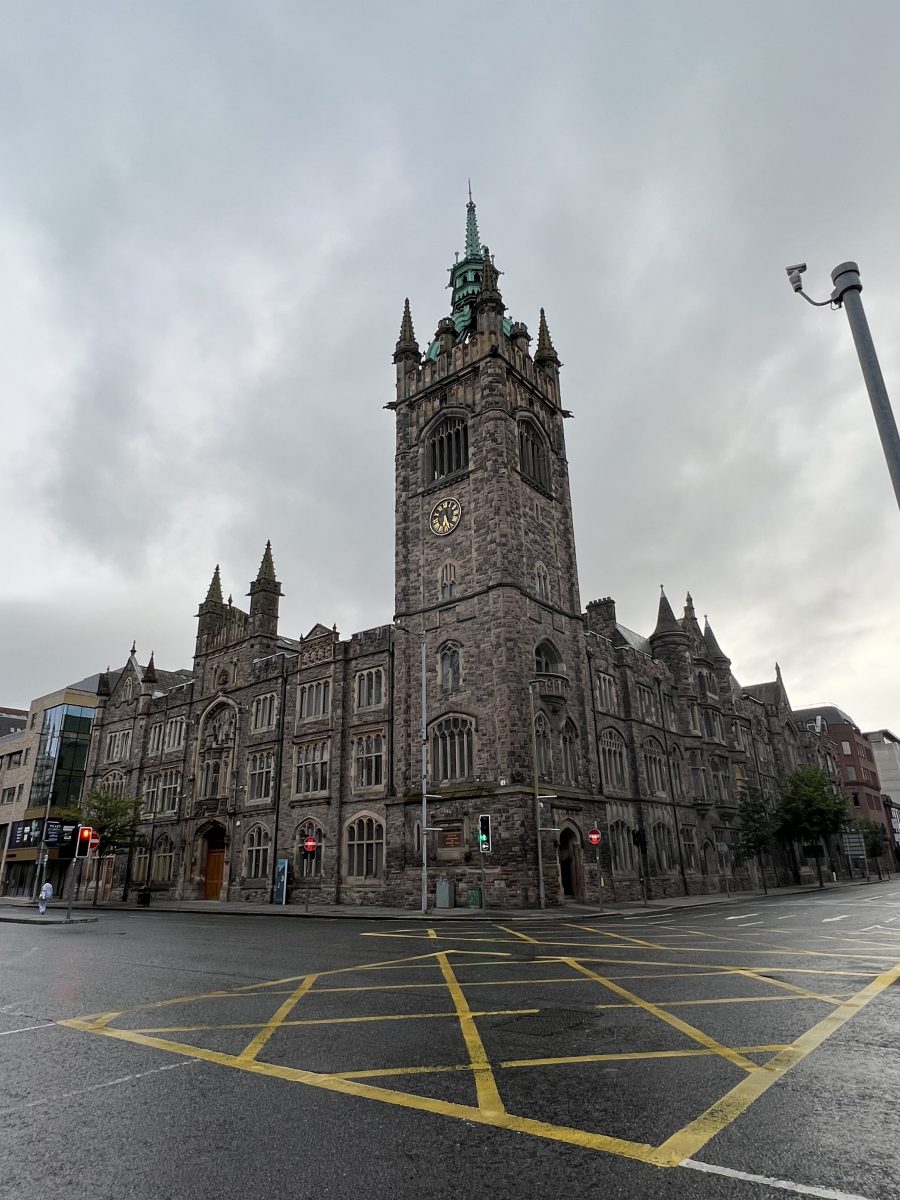
It was opened in 1905 as the Presbyterian Church of Ireland’s Assembly Building. Its bell tower contains Belfast’s only operational 12 bell peel and can play hymns and carols every hour. It is now a modern, high tech conference centre. It also has a visitor centre with displays on the history of the church.
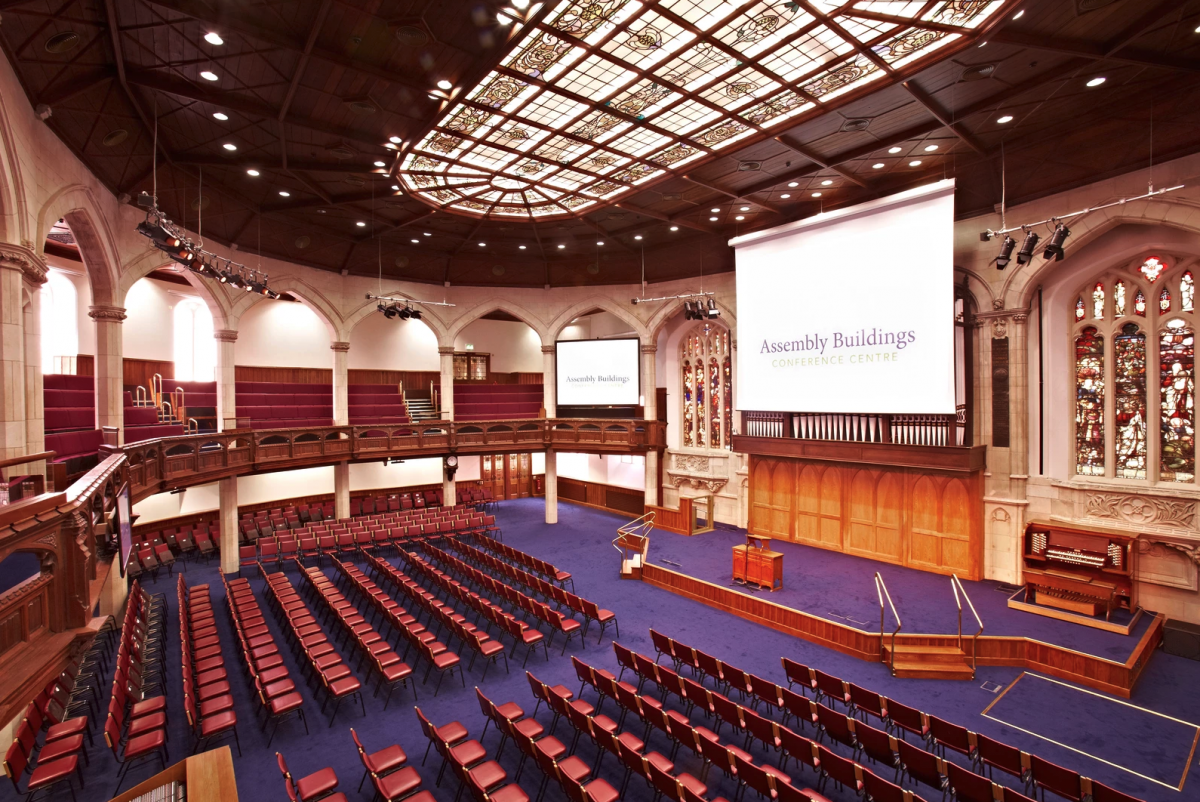
I headed down to Belfast City Hall. Queen Victoria charted the town of Belfast to a city in 1888. This new city hall was built to reflect the new status. The Classic Renaissance building was completed in 1906.
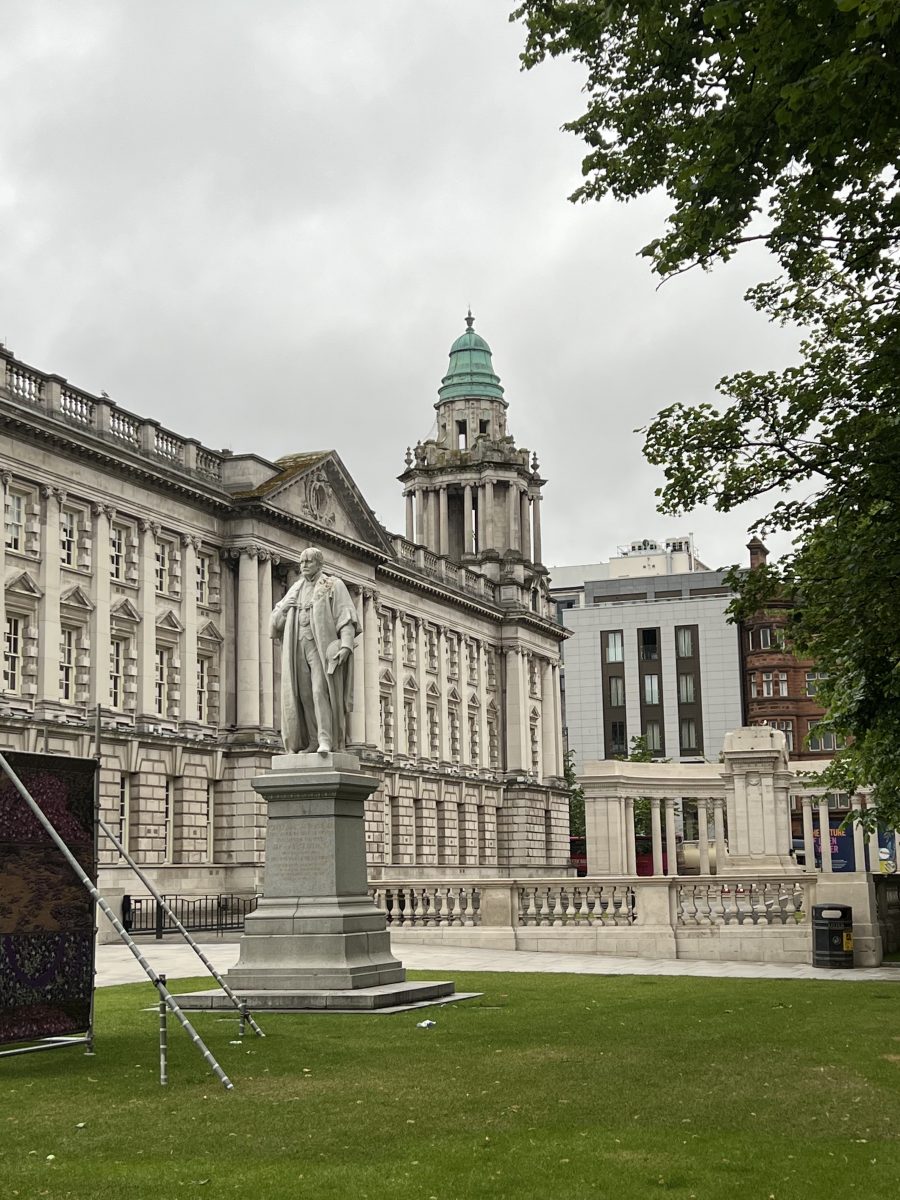
4 types of marble were used – three from Italy and one from Greece. It was the seat of Northern Ireland’s first parliament after the partition of 1921.

A floral sign of Belfast. It heralds the arrival of summertime.
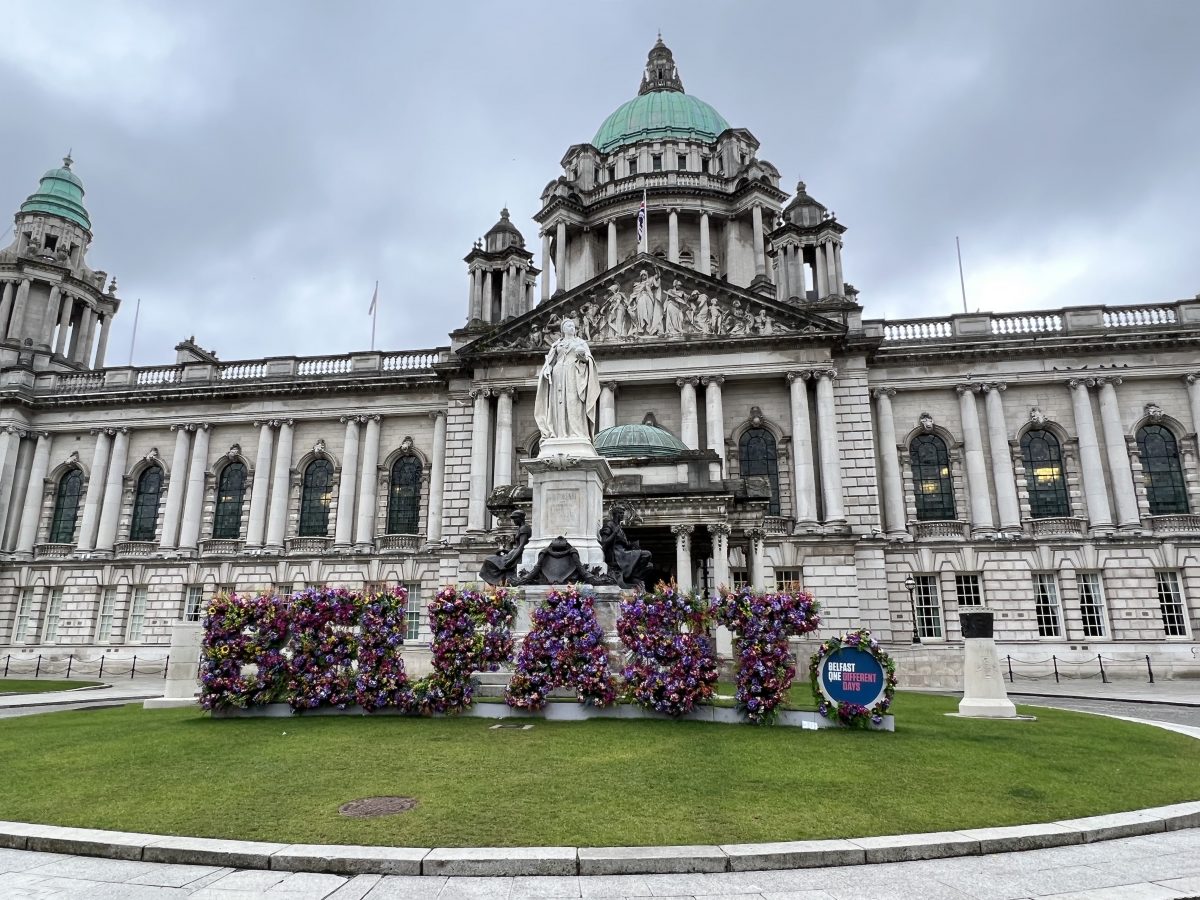
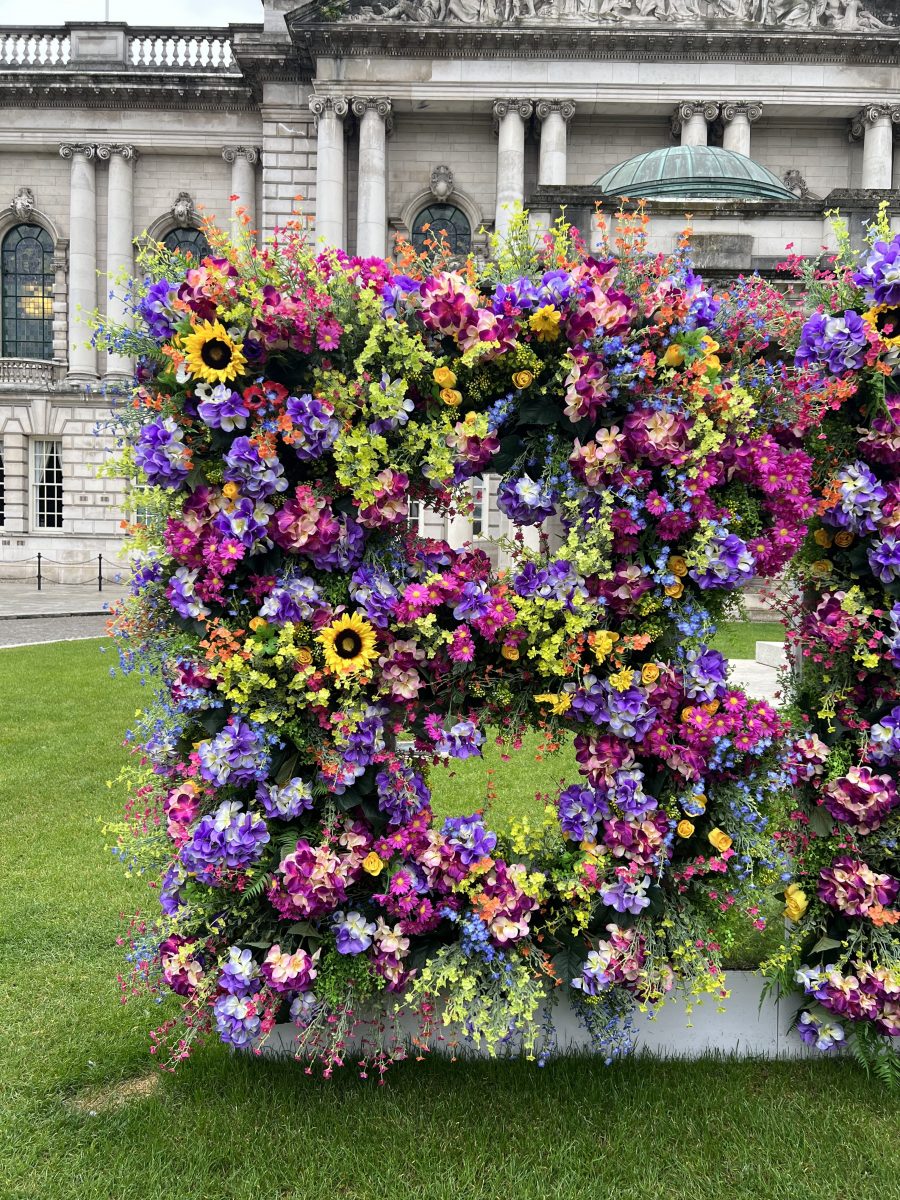
There are a few statues around the building – Queen Victoria.
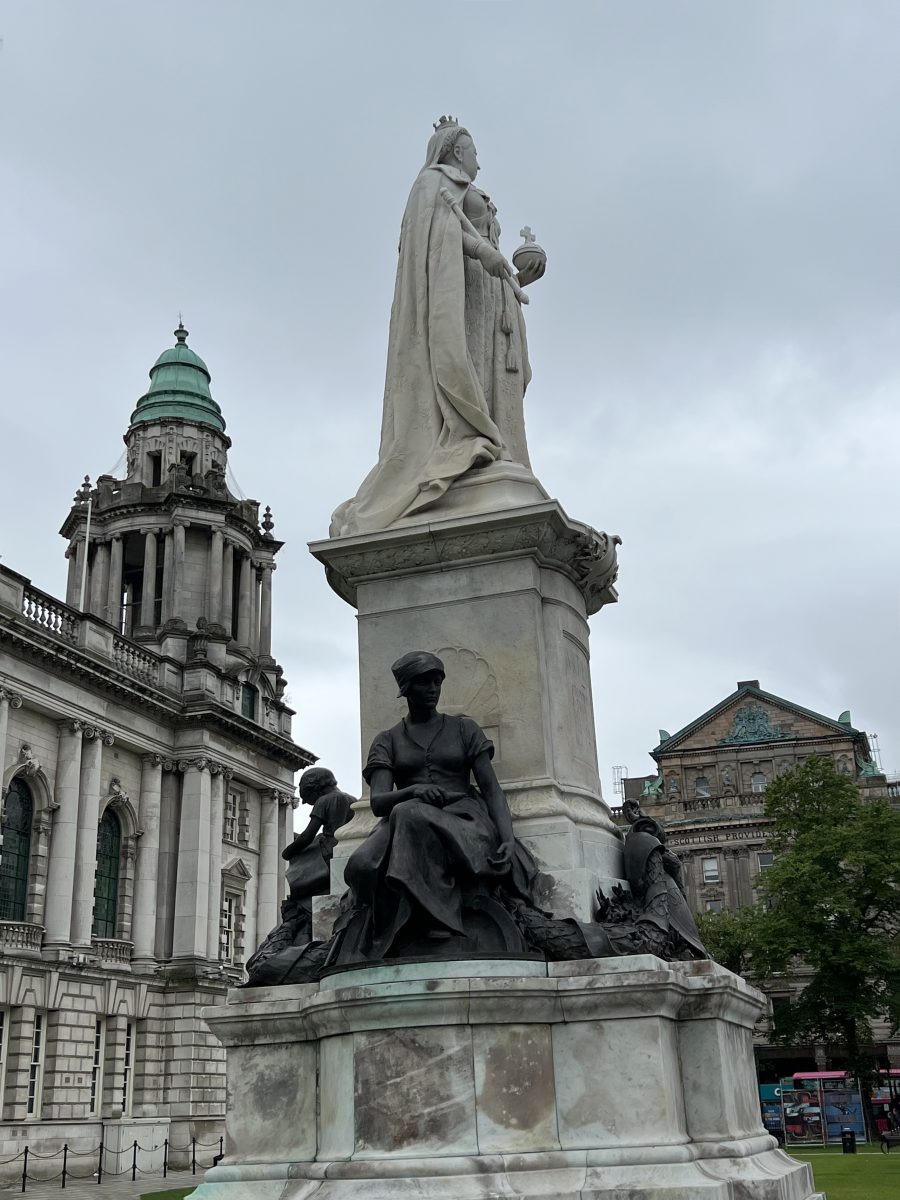
Then there is the Titanic Memorial with the “Thane” statue. When Belfast was made a city, it had the largest shipbuilder in the world – Harland and Wolff – the company that built the Titanic.
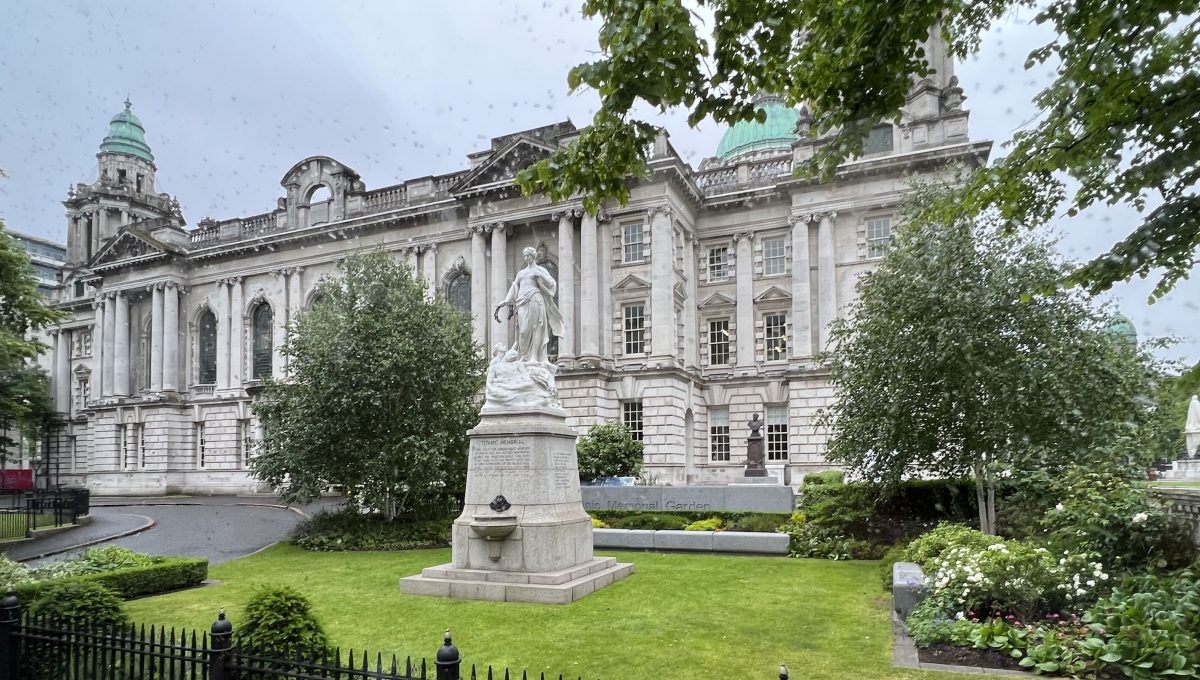
Thane is the goddess of death. Her wreath is pointing down toward the two sea nymphs pulling a sailor from the water.
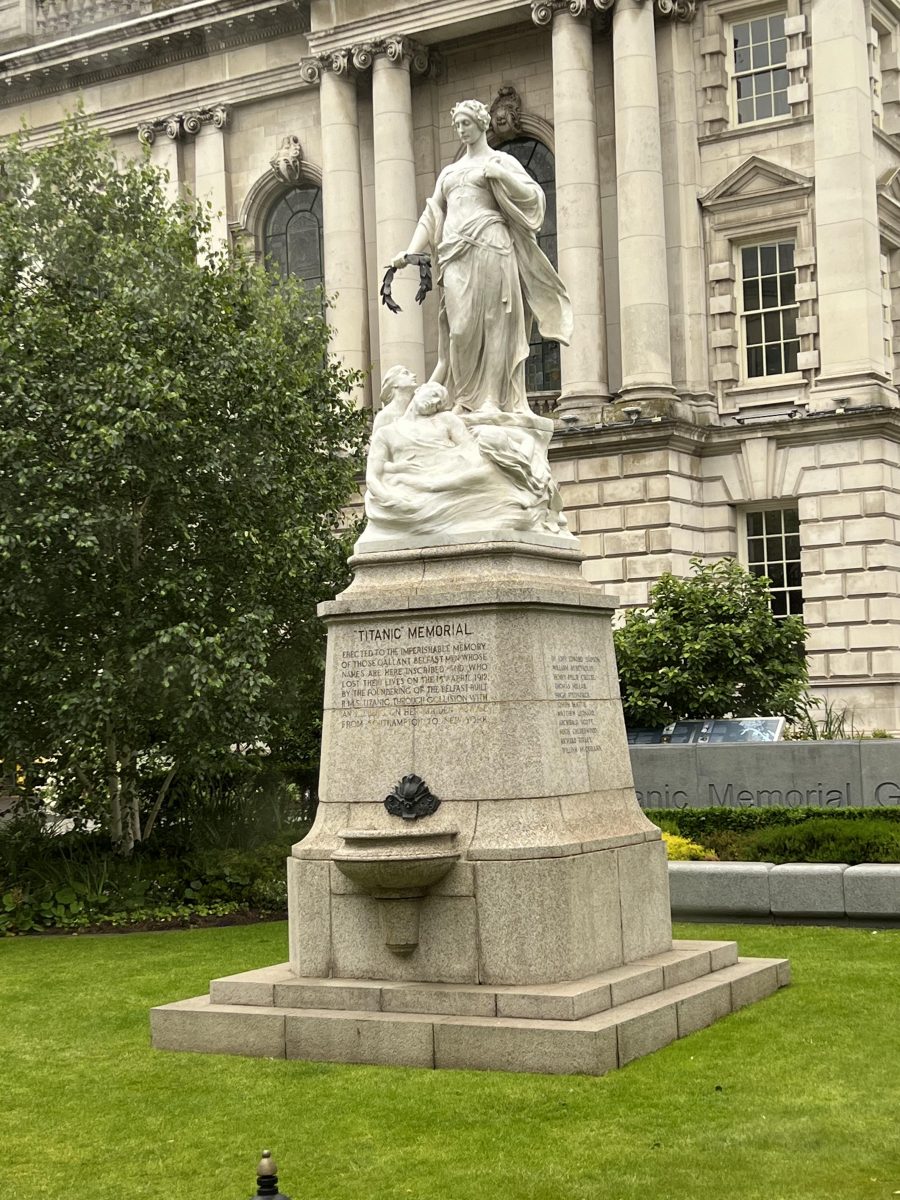
The names of all those who lost their lives are part of the memorial. 1,500 names. It includes the names of both the passengers and the crew, including the Captain John Smith and the richest man in the world at the time J.J. Astor. Astor was honeymooning in Europe with his pregnant, 19 year old wife. She was allowed into the lifeboat. Astor asked if he could join her because of her condition and was told no, only women and children. He went back on the deck with his butler and drank brandy as the shipped went down.
It is a memorial garden that comes into full bloom in July and August. The garden was built 10 years ago on the 100th anniversary of the sinking.

There was a photographic exhibition in Belfast and a number of pieces were on display around the grounds
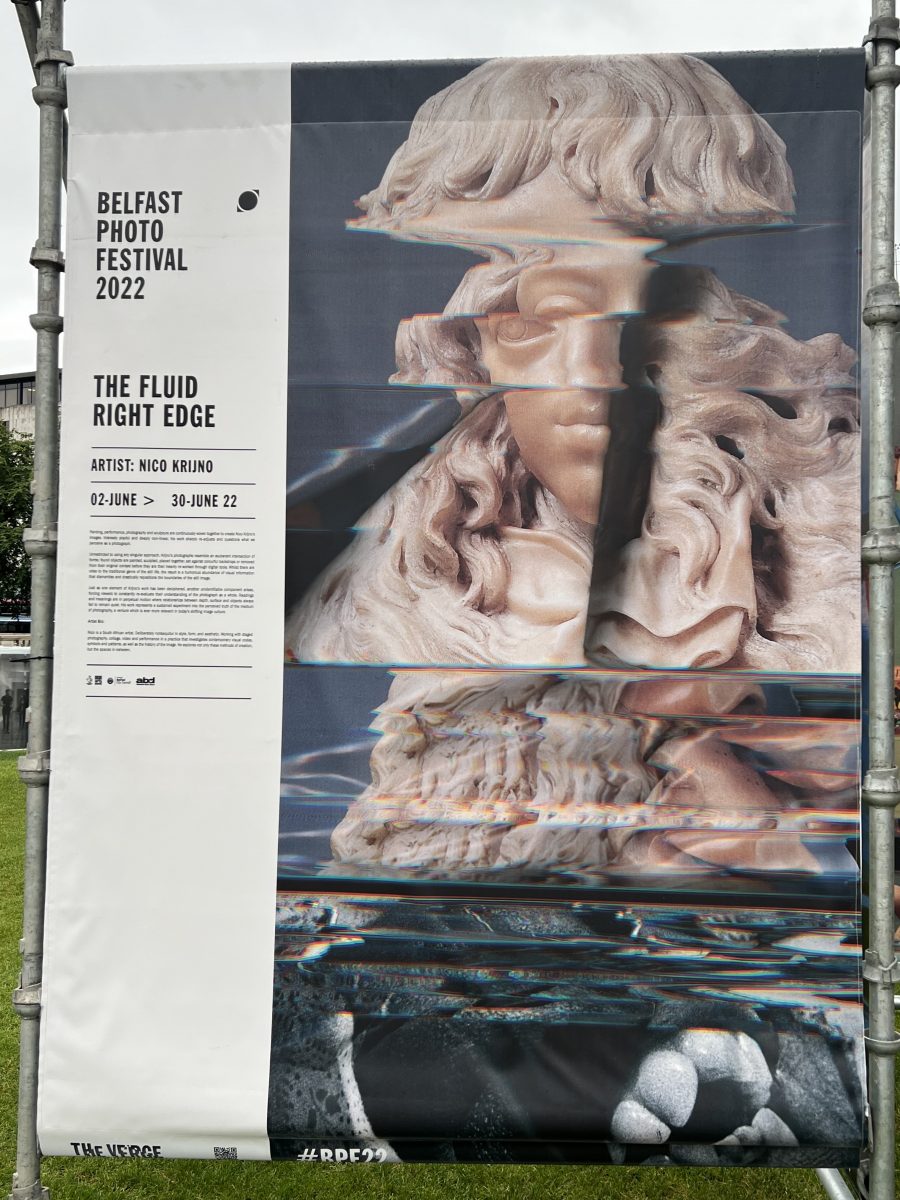
It was time for our coach tour so headed back to the hotel. Our guide began by giving some background facts to Belfast – like it was the largest exporter of linen in the world. Also the world’s biggest rope exporter. I would learn more about this at the Titanic Museum later that day.
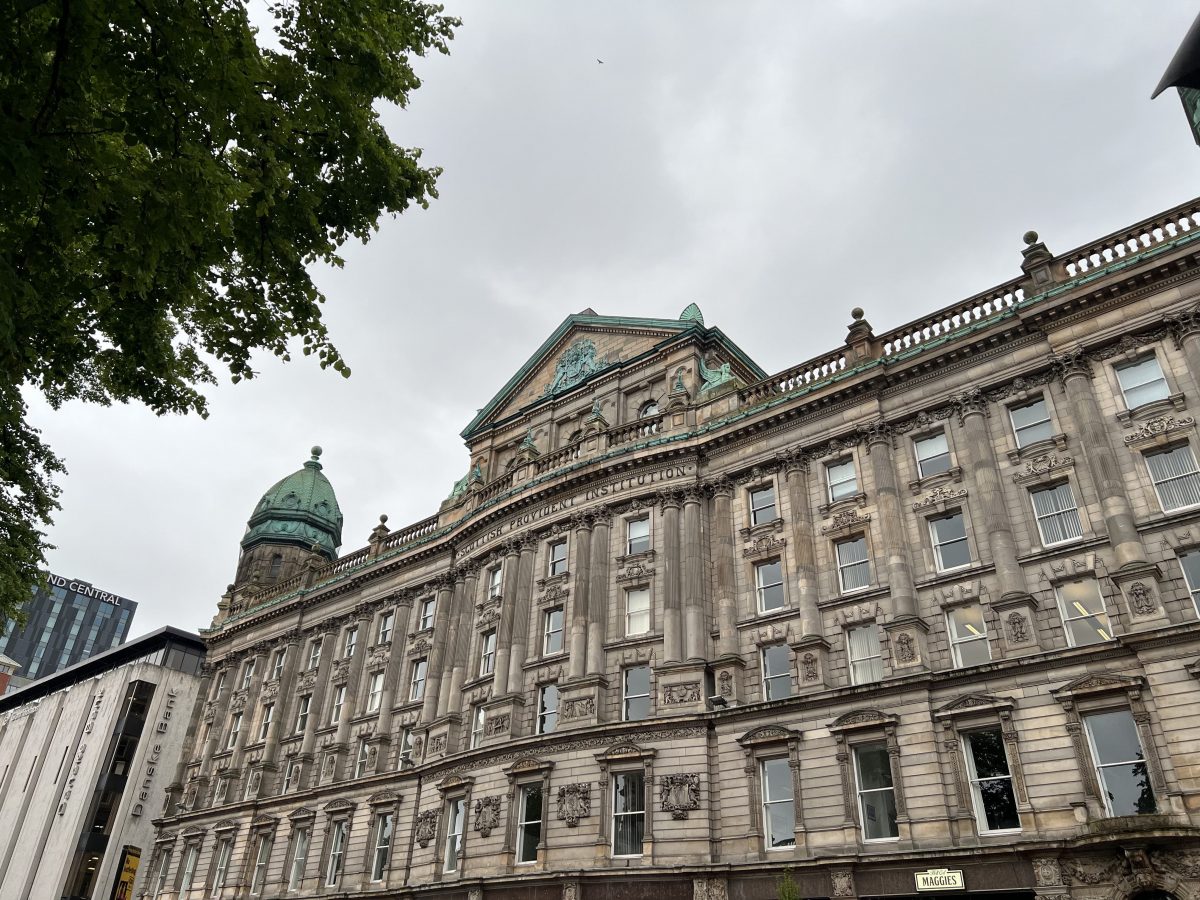
Our guide pointed out the city hall. She said that it is a working city hall. The council meets once a month to discuss civic matters. It is also where births, marriages and deaths are certified.
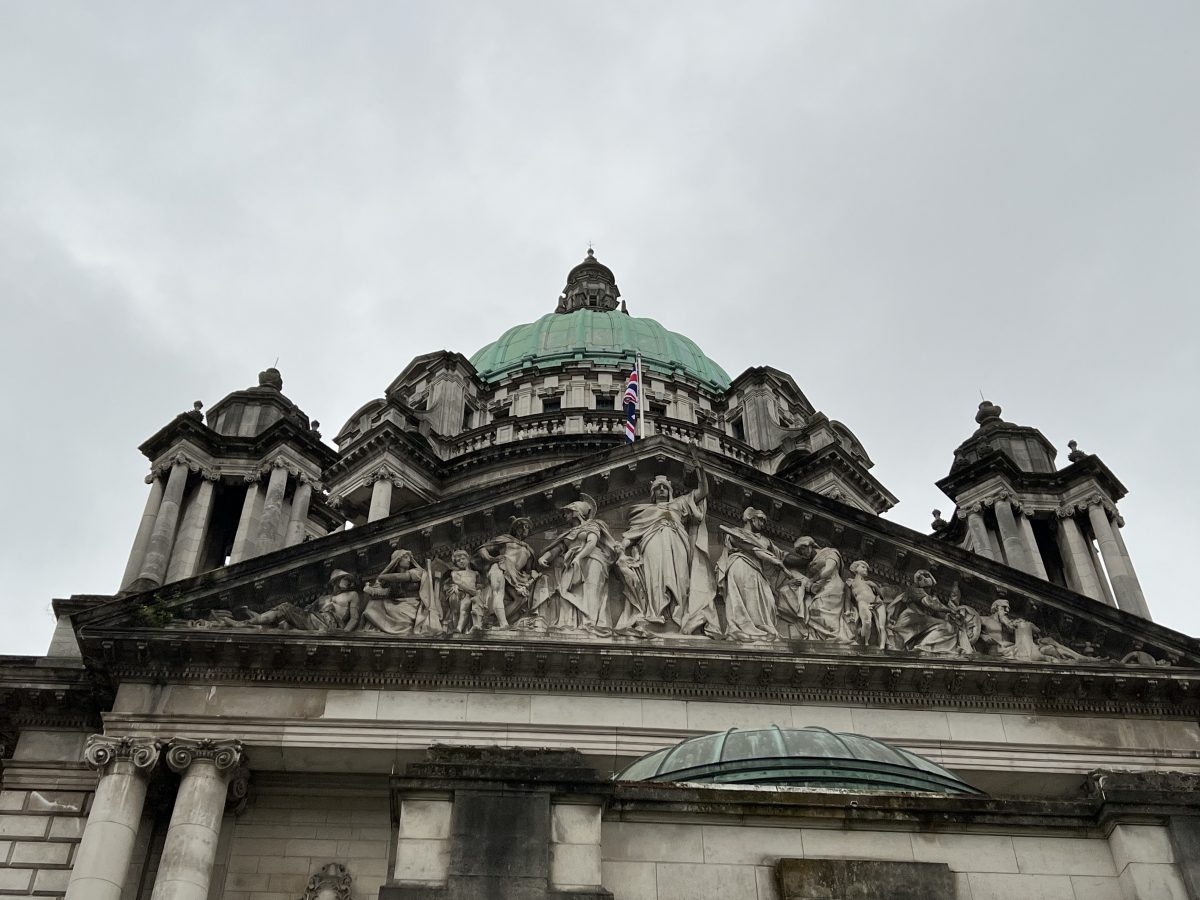
Our tour guide for Belfast was great. She spoke clearly, loudly and had a great many stories. She was taking us to Queen’s University for a walkabout. However, on the way she pointed out different sites. One was the Ulster Hall. Built in 1862 as a place of entertainment. Charles Dickens read from Great Expectations. Led Zeppelin premiered Stairway To Heaven, first time it was ever played publicly, at Ulster Hall. So with Charles Dickens and Led Zeppelin as part of your history, the place has to be included in this blog.
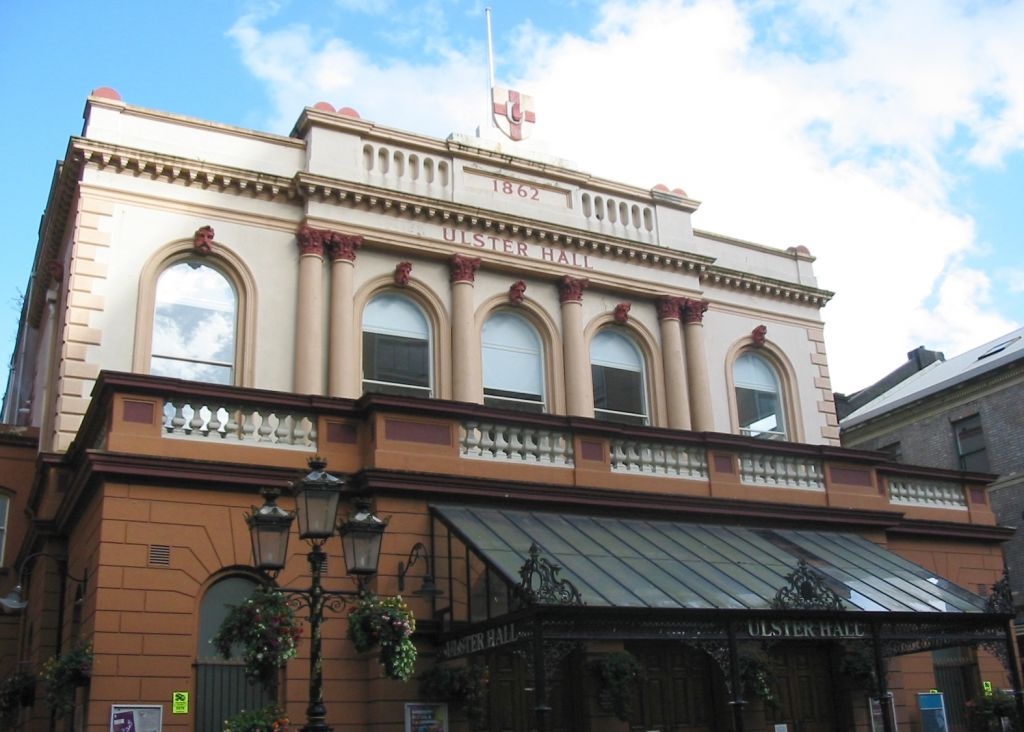
In the 1940s, American soldiers stationed in Belfast held their dances at the Ulster Hall. They introduced a new dance that the Irish had not heard of – the Jitterbug. In 1942 the floor collapsed from the dancing. It was replaced by the American military. However, in 1982 it happened again when Dexys Midnight Runners were playing Come On Eileen.
Queen’s University is one of the top 15 in the United Kingdom in terms of research and quality of teaching.
The semester at the university had ended so things were quiet. There are about 25,000 students attending, representing 80 countries. Built in 1846, designed by architect Charlies Lanyon. It was based on the design of Oxford College.
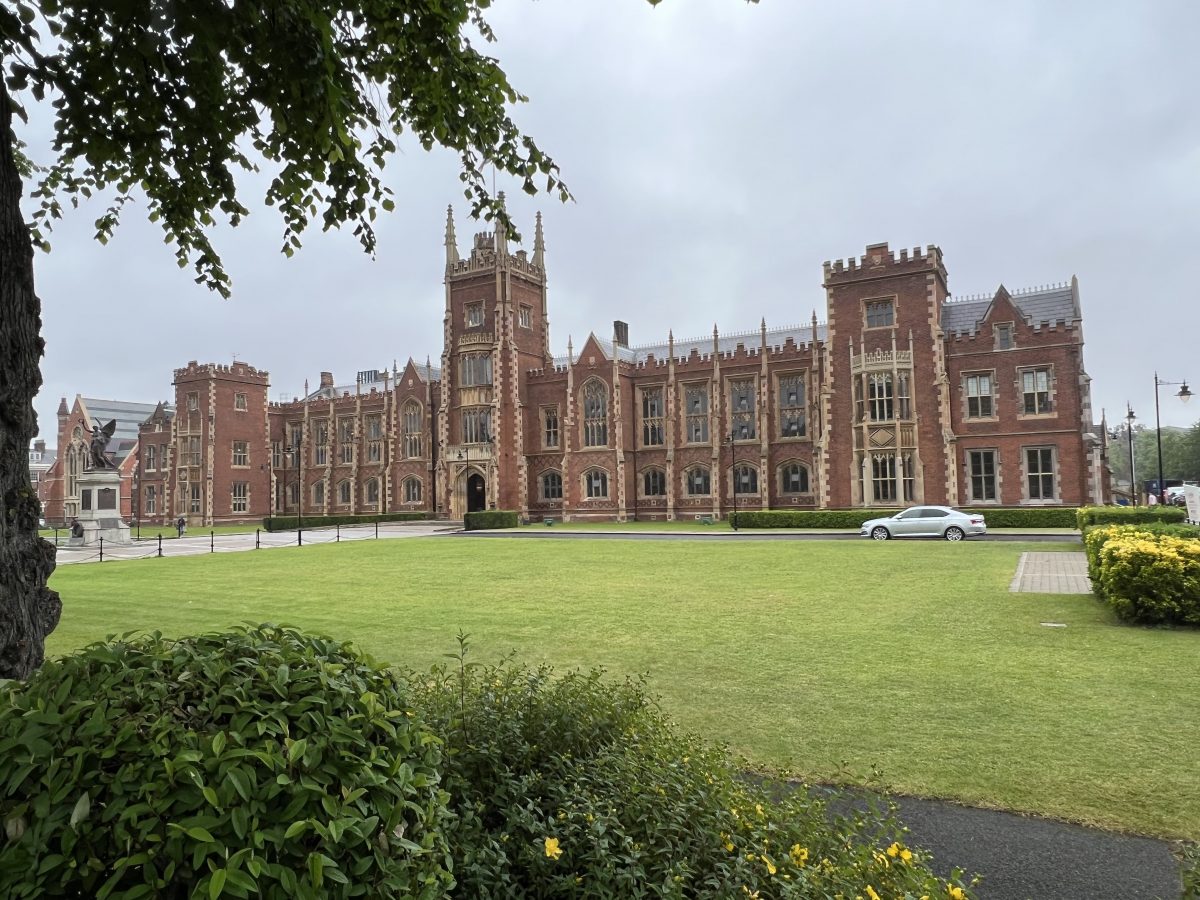
The red brick really stands out. I noticed what looked like a hand displayed in relief at the top. Queen Victoria established the university because, at the time, the only other one was Presbyterian. If you weren’t Presbyterian, you could not attend. So Queen’s University was granted a charter as a place for all faiths.
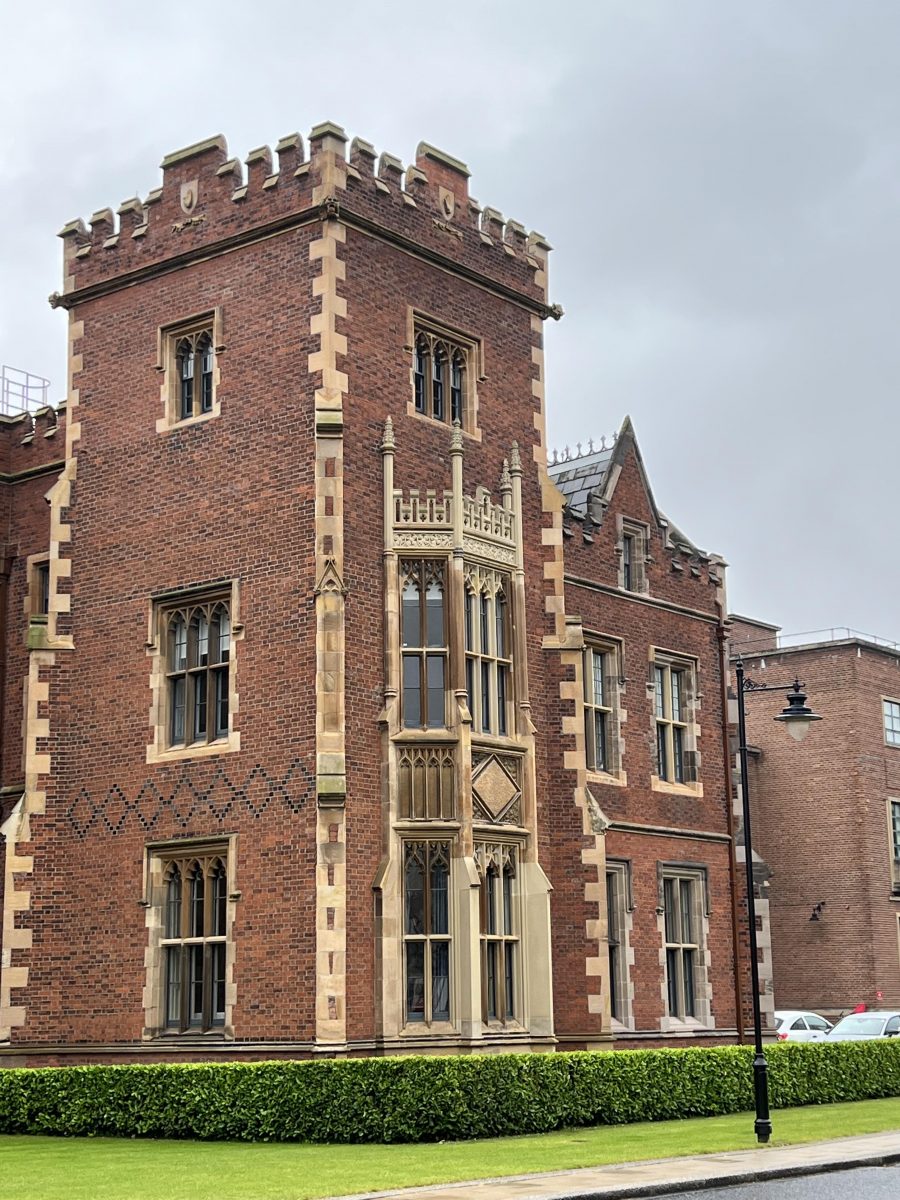
The hand again at the entrance to the Black and White Hall.
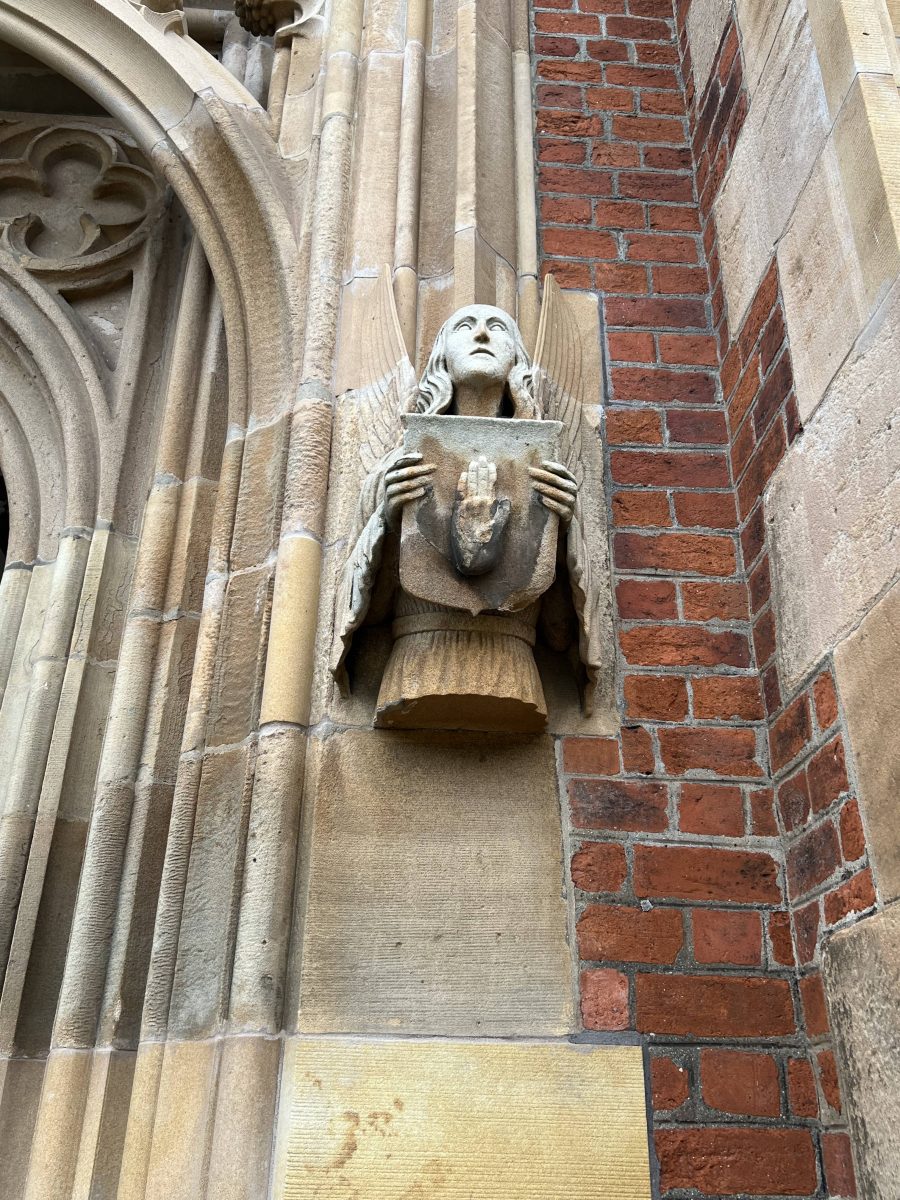
There is a good relationship between Queen’s University, Belfast and Queen’s University, Kingston, Ontario. There is even a Canada Room for study. C.S. Lewis attended here before going to Oxford. Liam Neeson the actor, attended. Frank Partridge, the inventor of the portable defibrillator, taught here.
Plans were made to build a great, Gothic door to the Black and White hall. Instead a window with a stained glass was built. It was designed by J.E. Nuttgens in 1939 but not put in place until after the war. The figures are Courage, Wisdom, Alma Mater, Temperance and Justice.
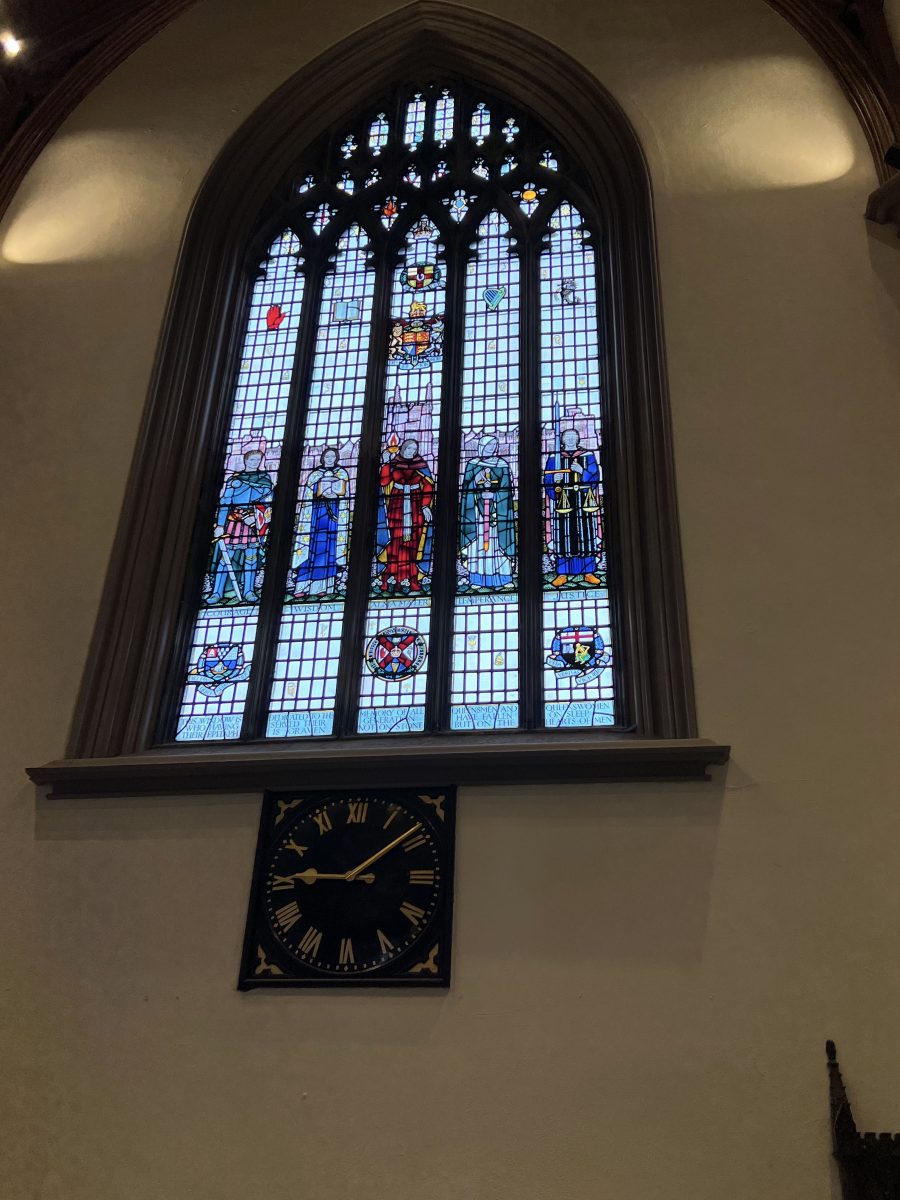
Below the window it the centre piece of the hallway is Pio Fedi’s statue of Galileo
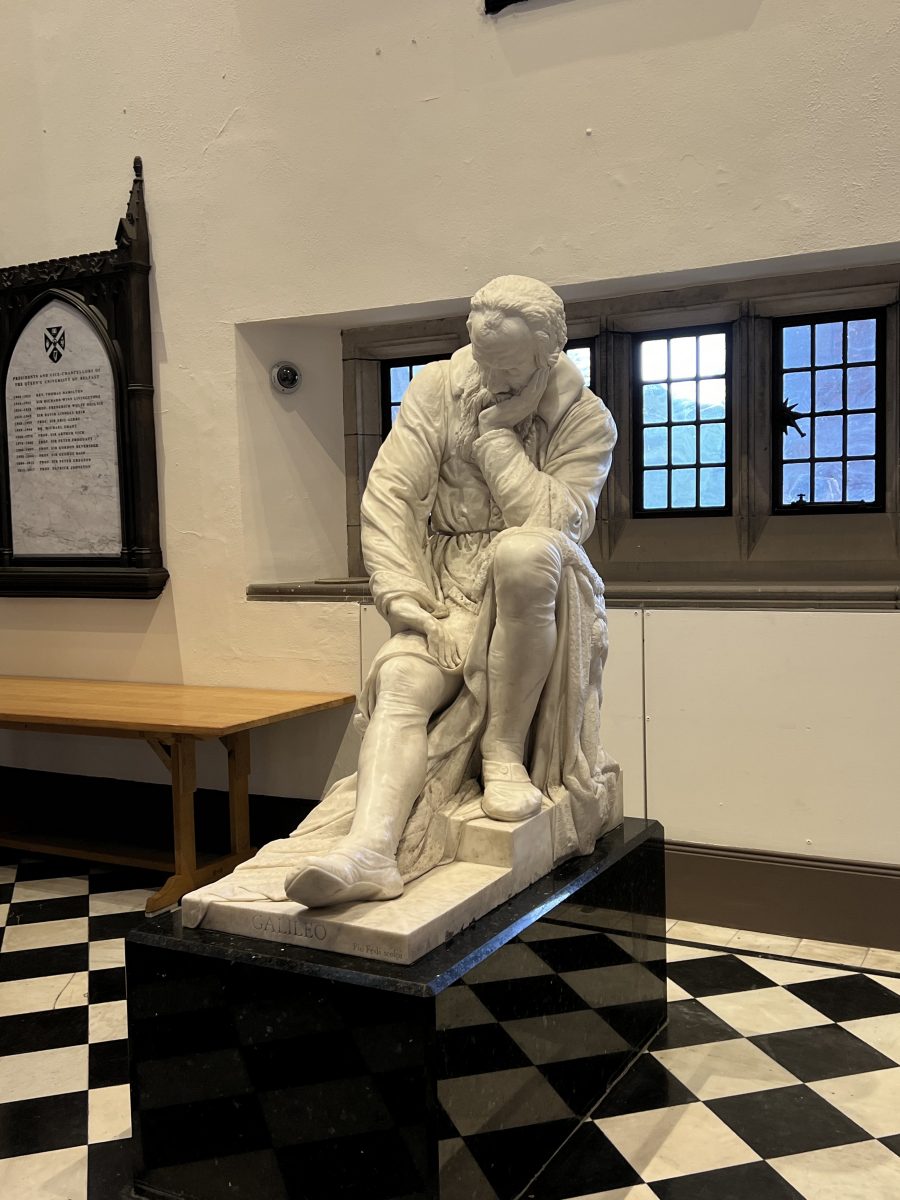
A chamber looks down on the hall. It is used for recitals with the musicians playing up there and the crowd down below
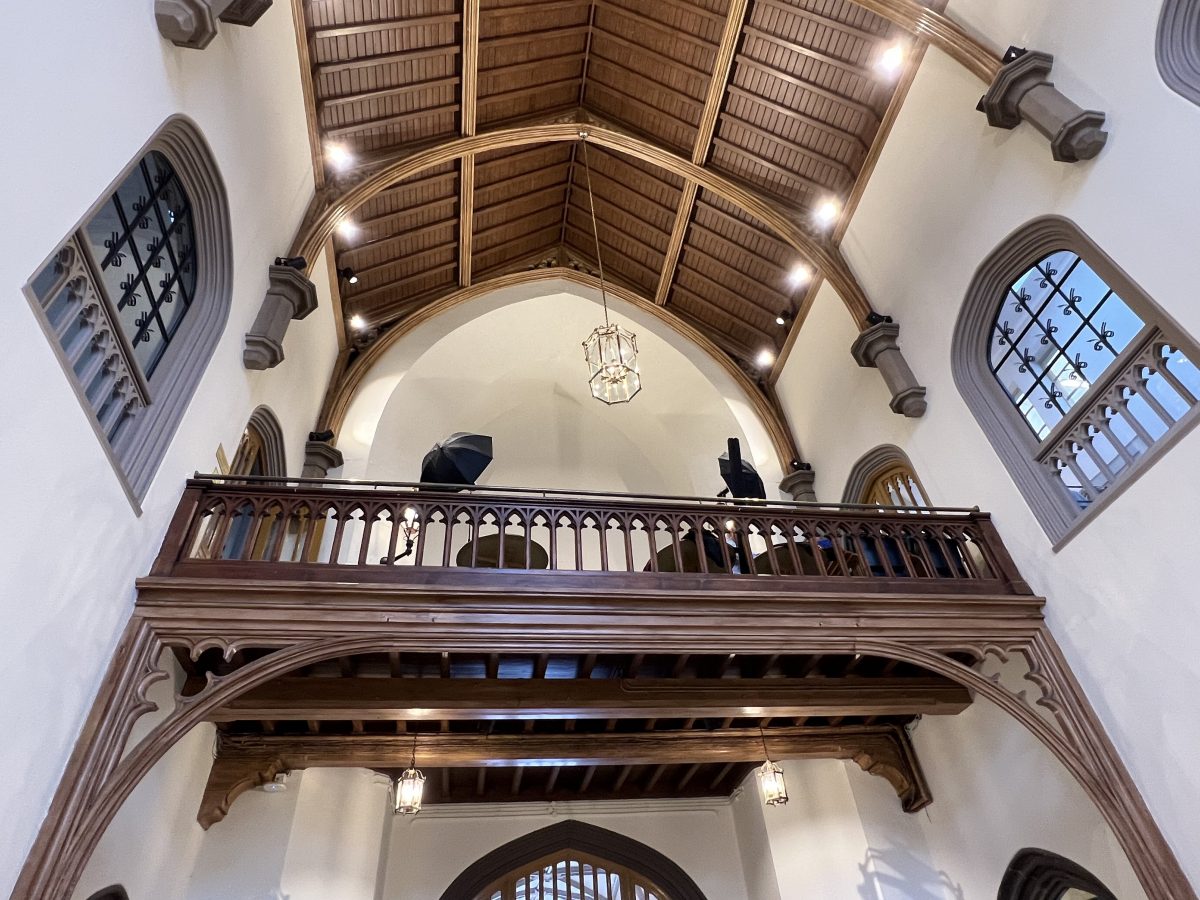
I had noticed a red hand in the ceiling and asked our guide about it. It is the symbol of the province of Ulster and can be found throughout the city.
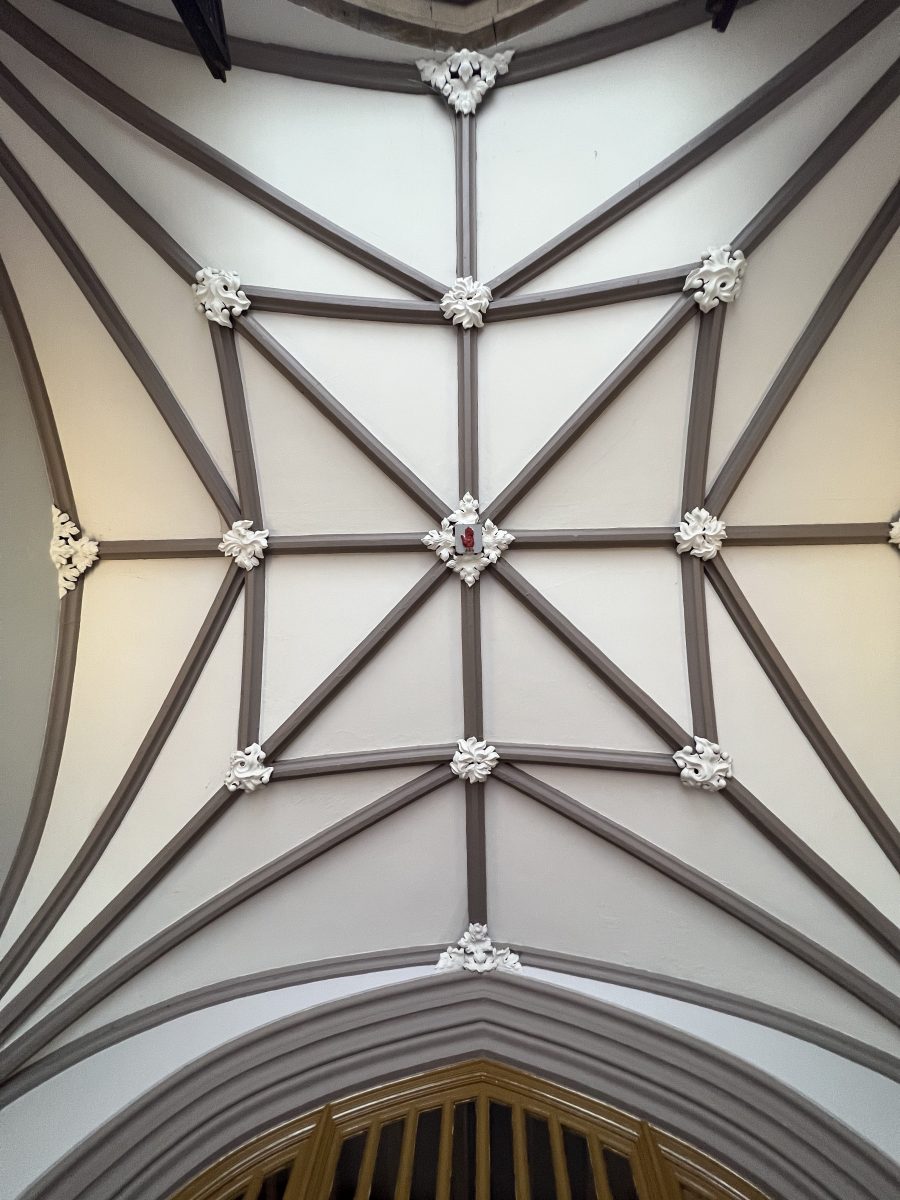
Historically, it was the Gaelic symbol that denoted a great warrior. Here it is at Albert Bridge.

The university has since expanded to accommodate the student population. This church is not part of the Faculty of Music and used for practice recitals for the Ulster Orchestra.
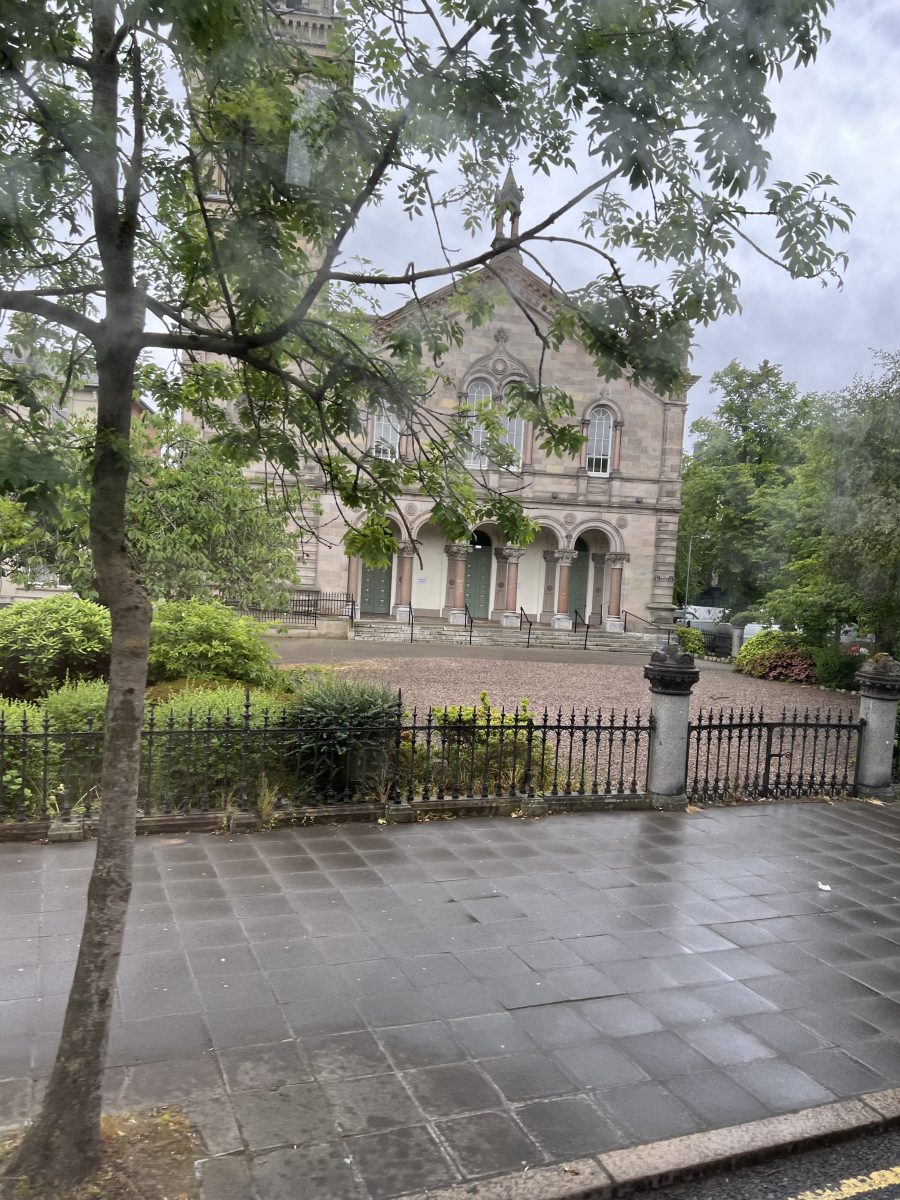
We continued on to the Peace Wall where our guide talked about the time of The Troubles. I will continue with that in the next post.
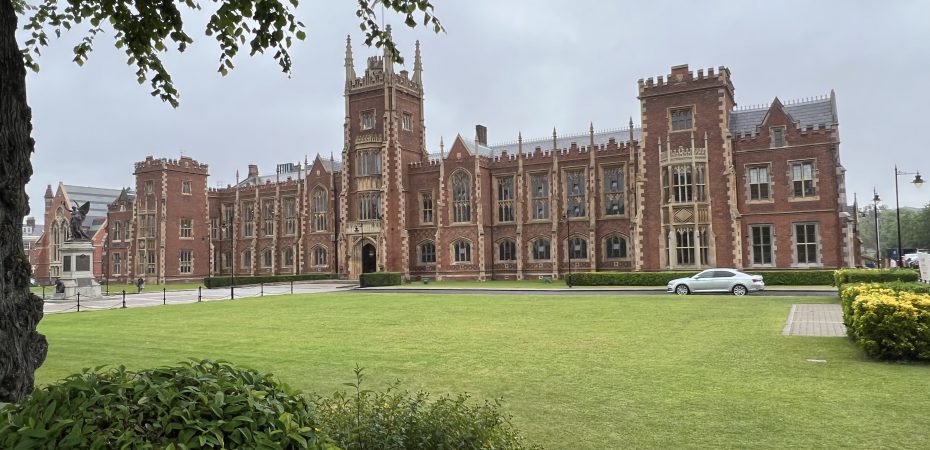
Great as usual. Thank you, Larry!! I may not always leave a reply, but I thoroughly enjoy each and every blog!
Thanks Inge. I appreciate you take the time to read what I’ve published.
Wonderful Larry!